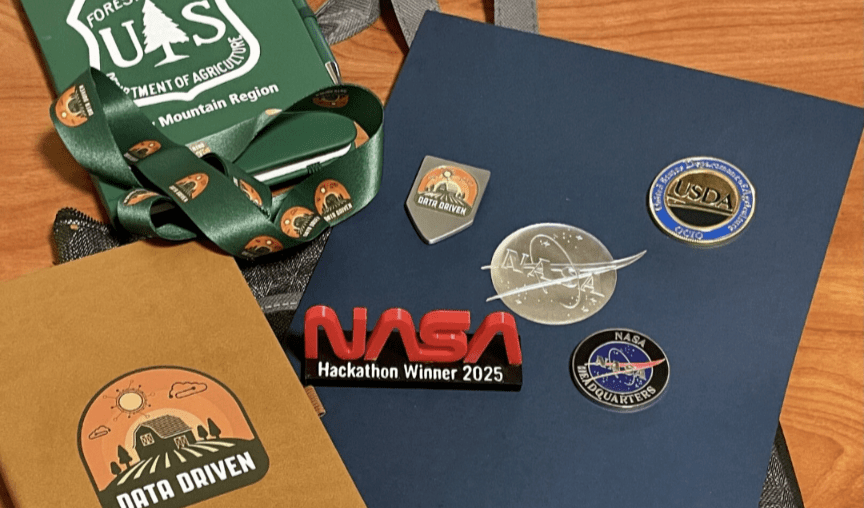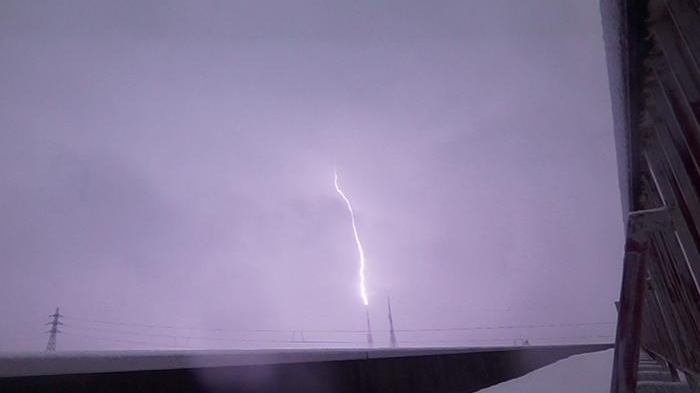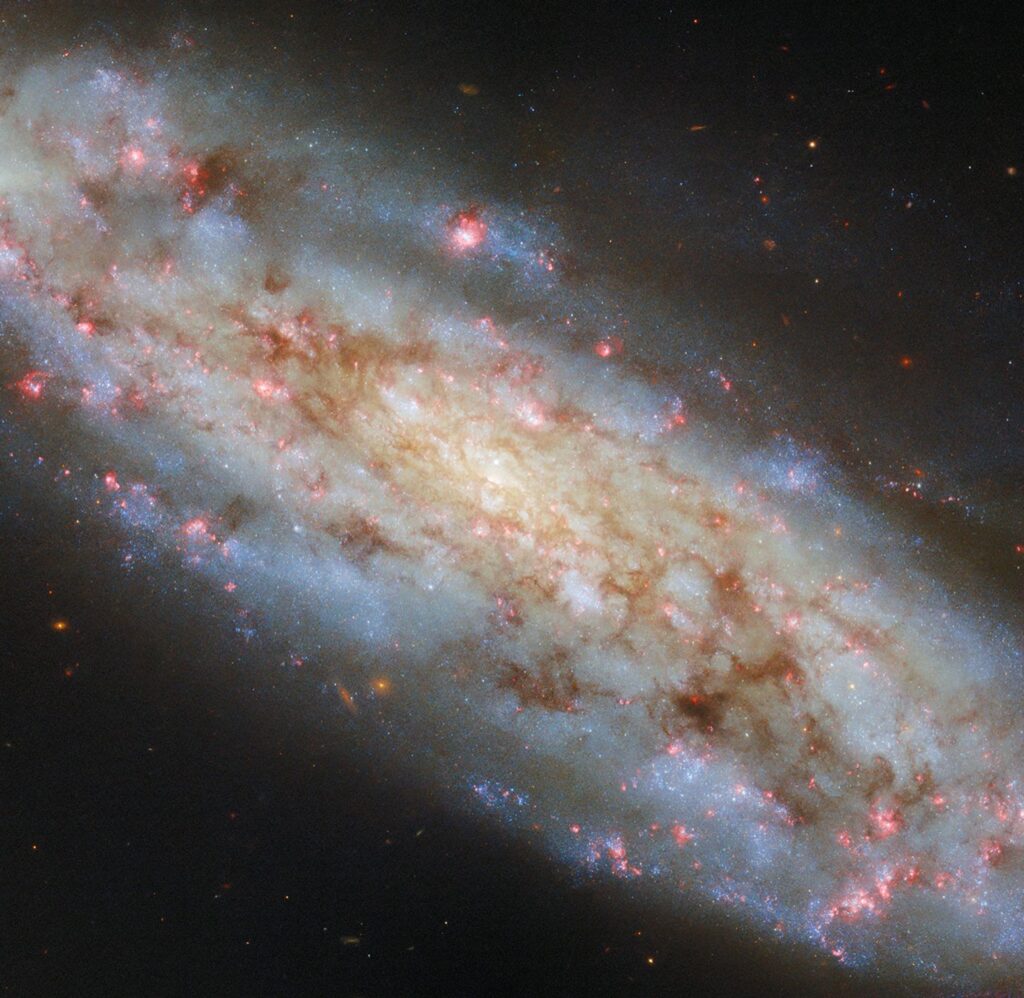In celebration of the 34th anniversary of the launch of NASA’s Hubble Space Telescope, astronomers took a snapshot of the Little Dumbbell Nebula, also known as Messier 76, or M76, located 3,400 light-years away in the northern circumpolar constellation Perseus. The name ‘Little Dumbbell’ comes from its shape that is a two-lobed structure of colorful, mottled, glowing gases resembling a balloon that’s been pinched around a middle waist. Like an inflating balloon, the lobes are expanding into space from a dying star seen as a white dot in the center. Blistering ultraviolet radiation from the super-hot star is causing the gases to glow. The red color is from nitrogen, and blue is from oxygen.
Related posts
-

Student Coders Bring Novel Approaches to NASA Challenge
In collaboration with the United States Department of Agriculture, Amazon Web Services, and Colorado State University,... -

When lightning bolts collide, do they unleash powerful gamma-ray flashes?
The most powerful explosions in the known universe come from what are known as gamma-ray bursts... -

Hubble Spies a Spiral So Inclined
Explore Hubble Hubble Home Overview About Hubble The History of Hubble Hubble Timeline Why Have a...